Can You Use a Ceramic Teapot on the Stove? Complete Guide
Table of Contents
Why Choose a Ceramic Teapot?
Ceramic teapots are timeless and elegant. They are perfect for brewing tea because they help bring out the true flavor of the leaves. If you want to enjoy a soothing cup of tea, a ceramic teapot is the best choice. But do you know how to use a ceramic teapot properly? How do you use a ceramic teapot properly? Many people don’t, and that’s okay—we’re here to help!
Using a ceramic teapot is simple and rewarding. With the right steps, you can make the perfect brew every time. In this guide, we’ll show you how to use a ceramic teapot and why it’s a favorite for tea lovers everywhere. Whether you’re new to tea or a seasoned drinker, you’ll love the results!
How to Use a Ceramic Teapot: A Simple Guide
Using a ceramic teapot is a fantastic way to brew tea, as it preserves the tea’s flavor and adds an elegant touch to the process. Whether you’re a tea enthusiast or a beginner, this guide will explain how do you use a ceramic teapot step by step. Plus, we’ll address common questions like whether you can use a ceramic teapot on the stove. Let’s dive in!
Cleaning and Preparing Your Ceramic Teapot
Before brewing your first pot of tea, it’s essential to clean and prepare your ceramic teapot. Start by rinsing the teapot with warm water. Avoid using soap, as the ceramic material can absorb its scent, which might impact the taste of your tea. A soft sponge works perfectly to remove any dust or residue. Once rinsed, place the teapot upside down on a clean towel to air dry. Taking these small steps ensures a fresh and flavorful brew every time.
How to Brew Tea in a Ceramic Teapot
To brew tea in your ceramic teapot, begin by warming the teapot. Pour some hot water into the teapot and gently swirl it around. This helps maintain the tea’s temperature during brewing. After a few seconds, pour out the water.
Next, measure the right amount of tea leaves. A good starting point is one teaspoon of tea leaves per cup of water, but feel free to adjust this based on your taste preference. If your teapot comes with a built-in infuser, place the leaves directly into it for a mess-free experience. (This is especially useful if you’re wondering how to use ceramic teapot with infuser!)
For the best results, ensure the water is at the right temperature for your type of tea. Green tea requires water around 80°C (176°F), while black tea does best with 90-100°C (194-212°F). Pour the hot water over the tea leaves, filling the teapot but leaving some space for the tea to expand. Let the tea steep for 2-5 minutes, depending on the tea type. Once done, pour and enjoy your tea.
Why Choose a Ceramic Teapot for Brewing Tea?
Ceramic teapots are popular because they retain heat well, making them perfect for brewing tea. They are also versatile and work well with various types of tea, from green and black tea to herbal blends. If you’re exploring more specific styles, you may also want to learn how to use a Japanese ceramic teapot, which often has unique designs and handles, perfect for brewing traditional teas like matcha or sencha.
Final Tips for Brewing Tea in a Ceramic Teapot
These tips can help you know how do you use a ceramic teapot properly:
- Use filtered water to improve the tea’s flavor.
- Avoid overfilling the teapot to allow the tea leaves to brew properly.
Experiment with tea leaves and steeping times to find the flavor you love.

How to Use a Ceramic Teapot with Infuser
A ceramic teapot with an infuser is a practical and easy way to brew tea. If you’ve ever asked how to use ceramic teapot with infuser, this guide will explain everything you need to know. It’s a simple process that ensures a flavorful, mess-free tea experience.
Preparing the Tea Leaves
When using a ceramic teapot with an infuser, the first step is preparing the tea leaves. Remove the infuser from the teapot and place the tea leaves inside it. A general rule is to use one teaspoon of tea leaves per cup of water, but you can adjust the amount based on how strong you like your tea. Once the tea leaves are ready, place the infuser back inside the teapot. This method makes using a ceramic teapot with an infuser clean and convenient, as the leaves stay contained while the flavor is released.
Cleaning the Infuser
Cleaning the infuser is an essential part of knowing how to use a ceramic teapot properly. After you’ve finished brewing, remove the infuser from the teapot and rinse it under warm water to wash away any leftover tea leaves. If there’s residue or stains, soak the infuser in warm water with a bit of vinegar or baking soda for a few minutes. This step ensures your teapot stays fresh and ready for the next use. Keeping the infuser clean is a key part of mastering ceramic teapots how to use.
Best Teas for Ceramic Teapots with Infuser
Certain types of tea work best when using an infuser. Green tea is an excellent choice, as its smaller leaves are easy to steep, and it doesn’t require a long brewing time. Herbal teas also work well because the infuser can hold fine herbs and flower pieces that might otherwise escape into the water. Black tea is another popular option, as the infuser ensures an even brew. Knowing which teas to use makes learning how to use a ceramic teapot even more enjoyable.
Can You Use a Ceramic Teapot on the Stove?
A common question among tea lovers is: can I use a ceramic teapot on the stove? The answer is not straightforward because most ceramic teapots are not designed for direct heat. Let’s break it down based on the type of stove and ceramic teapot.
Most ceramic teapots are delicate and not suitable for stove use. Placing them directly on heat sources like gas or electric stoves can cause cracking or damage. However, there are some exceptions, and understanding your teapot’s design is key.
Using a Ceramic Teapot on an Electric Stove
Many people ask, can you use a ceramic teapot on an electric stove? The answer depends on whether your ceramic teapot is heat-resistant. If it is:
- You can place it on the electric stove, but always use low to medium heat to avoid thermal shock.
- Never heat it too quickly, as ceramic expands with heat and may crack.
For non-stovetop-safe ceramic teapots, it’s better to heat the water in an electric kettle and pour it into the teapot for steeping.
Using a Ceramic Teapot on a Gas Stove
Another common question is: can you use a ceramic teapot on gas stove? In most cases, the answer is no. Regular ceramic teapots are not built to withstand the direct flame of a gas stove. The high heat can cause them to overheat and break.
However, if your teapot is specifically designed for gas stoves:
- Use a heat diffuser between the flame and the teapot. This distributes the heat evenly and reduces the risk of cracks.
- Keep the flame low to avoid overheating.
Recommendations for Using a Ceramic Teapot
If your ceramic teapot is not suitable for direct heat, here’s a safer alternative:
- Heat water in a separate kettle, either electric or stovetop.
- Pour the hot water into your ceramic teapot to brew your tea.
This method ensures your teapot stays safe and lasts longer. For those who want to use their teapot directly on a stove, look for ones labeled as stovetop-safe or designed for specific heat sources.
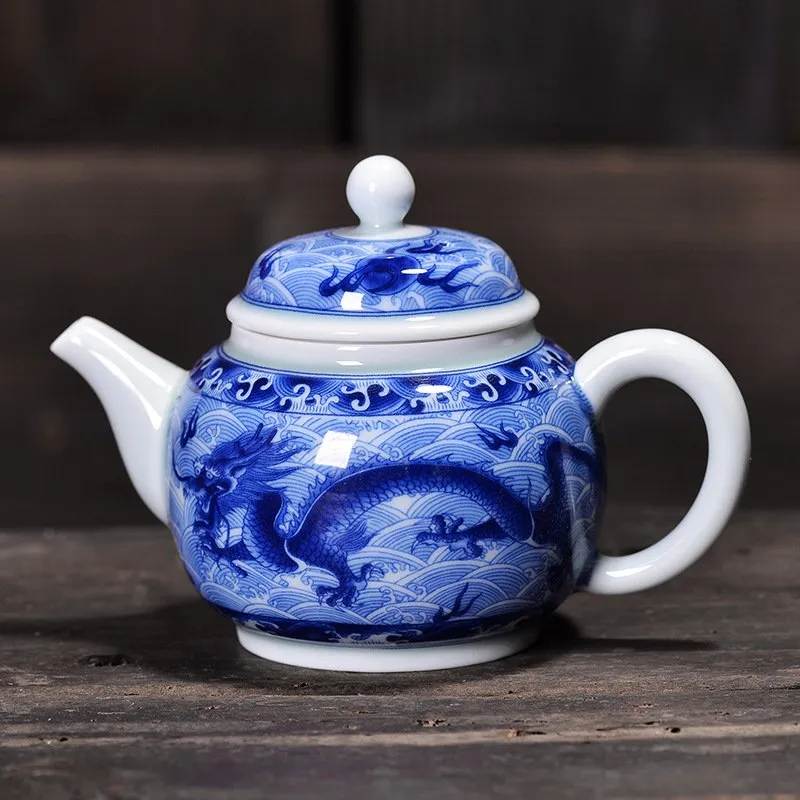
How to Use a Porcelain Teapot vs. a Ceramic Teapot
If you’ve ever wondered how to use a porcelain teapot or a ceramic teapot, it’s important to first understand their differences. While both are excellent for brewing tea, they have unique characteristics that make them better suited for specific needs. Let’s break down the key differences to help you choose the right teapot.
Material Differences
Porcelain and ceramic teapots are made from different materials, and this affects how they perform when brewing tea.
- Porcelain teapots are made from a finer, denser clay and fired at higher temperatures. This makes them smoother, thinner, and lighter compared to ceramic.
- Ceramic teapots, on the other hand, are made from thicker, more porous clay. They are heavier and sturdier but less refined than porcelain.
These material differences influence not just the look and feel of the teapot but also how it handles heat and tea flavor.
Heat Retention
When it comes to keeping your tea warm, ceramic teapots generally perform better because of their thickness. They retain heat for a longer time, making them ideal for teas that need to stay warm, like black tea or herbal tea.
Porcelain teapots are thinner and cool down faster. However, their smooth and non-porous surface ensures the tea doesn’t over-steep, which is perfect for delicate teas like green tea or white tea.
Aesthetic Appeal
Porcelain teapots are often considered more elegant and decorative. They are usually finished with a glossy glaze and may feature intricate designs, making them a beautiful addition to tea ceremonies or formal gatherings.
Ceramic teapots, on the other hand, have a more rustic and traditional look. They are often used in casual tea-drinking settings and are well-suited for everyday use.
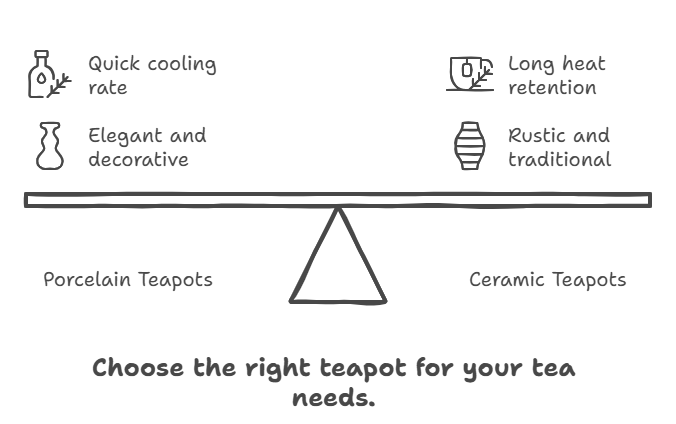
Which One Should You Choose?
The choice between porcelain and ceramic depends on your personal preferences and the type of tea you enjoy:
- Choose a porcelain teapot if you prefer a lightweight, elegant teapot and often brew delicate teas like green tea or white tea. Learning how to use a porcelain teapot is simple and perfect for preserving subtle tea flavors.
- Choose a ceramic teapot if you need a sturdy teapot that keeps tea warm for a long time, making it great for black tea or herbal teas.
How to Use a Porcelain Teapot
If you’re new to using porcelain teapots and wondering how to use porcelain teapot, here are a few tips:
- Use water at the correct temperature, especially for delicate teas. Avoid boiling water, as it can damage the porcelain or affect the tea’s flavor.
- Preheat the teapot by rinsing it with warm water before brewing. This prevents temperature shocks that could cause cracks.
Porcelain teapots are non-porous, so they’re perfect for brewing multiple types of tea without retaining flavors.
How to Use a Japanese Ceramic Teapot
If you’re interested in traditional tea brewing, learning how to use a Japanese ceramic teapot is a must. These teapots, often called “Kyusu,” are specially designed for making Japanese teas like sencha and matcha. Their unique design and functionality make them a favorite among tea lovers. Let’s explore how to use them effectively.
Unique Features of Japanese Ceramic Teapots
Japanese ceramic teapots have a distinct design that sets them apart:
- Side handle design: Most Kyusu teapots have a handle on the side instead of the back. This allows you to pour tea with better control, especially for delicate teas.
- Built-in strainer: Many Kyusu teapots come with a built-in strainer, ensuring loose tea leaves stay in the pot while pouring into your cup. This makes them very convenient for using a ceramic teapotwith loose-leaf teas.
- Lightweight and elegant: These teapots are often thin and lightweight, ideal for brewing small, precise servings of tea.
Understanding these features is key to mastering how to use a Japanese ceramic teapot properly.
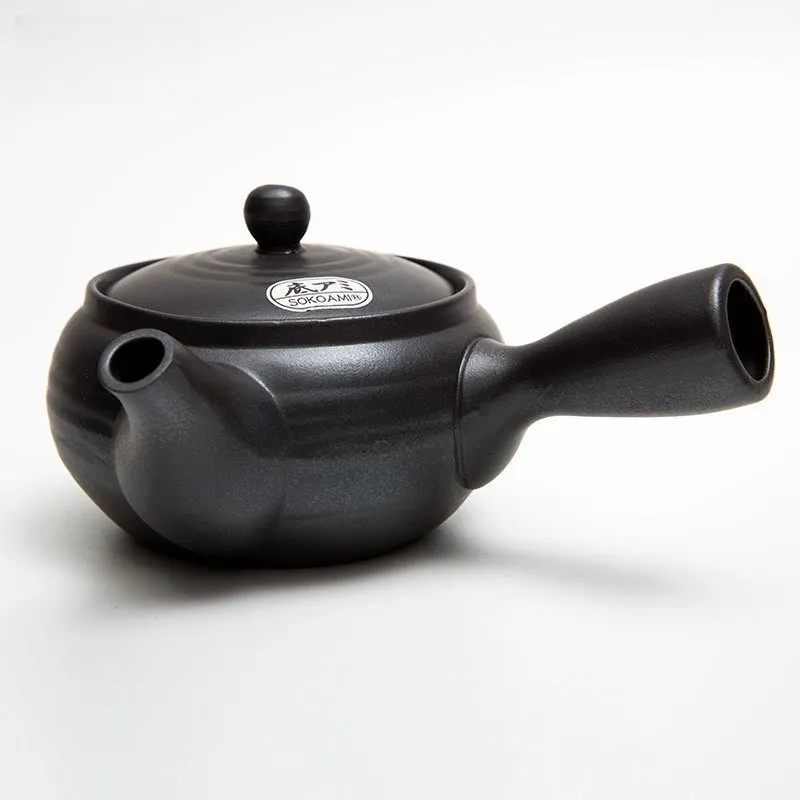
How to Brew Tea in a Japanese Ceramic Teapot
Using a Japanese ceramic teapot is simple, but attention to detail is essential to brew tea the traditional way.
- Preheat the teapot: Start by pouring warm water into the teapot, swishing it around, and then pouring it out. This step helps maintain the right brewing temperature for your tea.
- Add tea leaves: Place the tea leaves directly into the teapot. For sencha, use about 1 teaspoon of leaves per cup of water.
- Pour water at the correct temperature: Japanese teas require cooler water compared to other types of tea. Use water at around 70–80°C (160–176°F) to preserve the delicate flavor. This step is key when learning how to use porcelain teapot or ceramic teapot styles.
- Steep for the right time: Allow the tea to steep for 1–2 minutes, depending on the type of tea. Keep the lid on to maintain the heat.
- Pour carefully: Hold the side handle and pour the tea slowly into cups. The built-in strainer will ensure no leaves escape.
By following these steps, you’ll learn how to use a Japanese ceramic teapot to brew tea with perfect flavor.
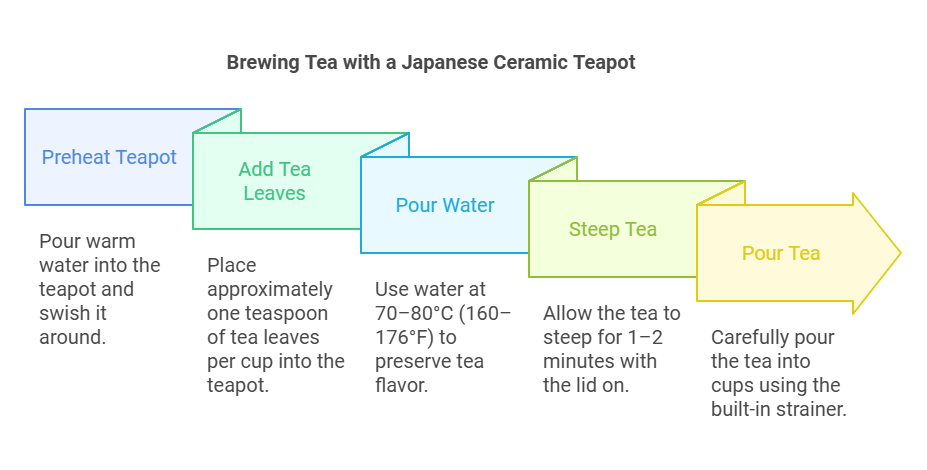
Can You Use a Japanese Ceramic Teapot on the Stove?
A common question is, “can you use ceramic teapot on stove” or “can you use a ceramic teapot on gas stove?” For most Japanese ceramic teapots, the answer is no. These teapots are designed for brewing, not for direct heating. Using them on a stove may cause cracking or damage.
If you need to heat water, use a separate kettle, then pour the hot water into the teapot. This preserves the teapot’s delicate design and ensures it lasts longer. This tip is helpful not only for Japanese teapots but also when considering how to use a porcelain teapot or any other fragile tea vessel.
How to Care for a Japanese Ceramic Teapot
Proper care is essential for keeping your Japanese ceramic teapot in great condition. Here’s how:
- Rinse with water only: Avoid using soap, as it can leave a residue that affects the tea’s flavor.
- Dry completely: After rinsing, allow the teapot to air dry completely to prevent mold or odor.
- Avoid sudden temperature changes: Don’t pour cold water into a hot teapot or vice versa, as this can cause cracks.
Choosing the Right Ceramic Teapot: Enjoy the Joy of Tea Brewing
Using a ceramic teapot is about more than just making tea—it’s about creating a peaceful and enjoyable experience. Whether you’re learning how to use a ceramic teapot or trying a new style like how to use a porcelain teapot, choosing the right teapot makes all the difference.
Key Tips to Remember
When it comes to ceramic teapots how to use, keeping a few important points in mind will ensure you get the most out of your tea brewing:
- Choose the right teapot: A thicker ceramic teapot retains heat longer, making it ideal for black teas or herbal teas. If you’re brewing delicate teas like green or white tea, you might prefer a porcelain teapot for its smooth surface and faster cooling.
- Follow proper brewing techniques: Always use the right water temperature and steeping time for your tea. This is especially important when mastering how to use a porcelain teapotor a teapot with an infuser.
- Take care of your teapot: Regular cleaning and proper drying will keep your teapot in excellent condition for years to come. This applies to all types of teapots, from Japanese styles to more traditional ceramic ones.
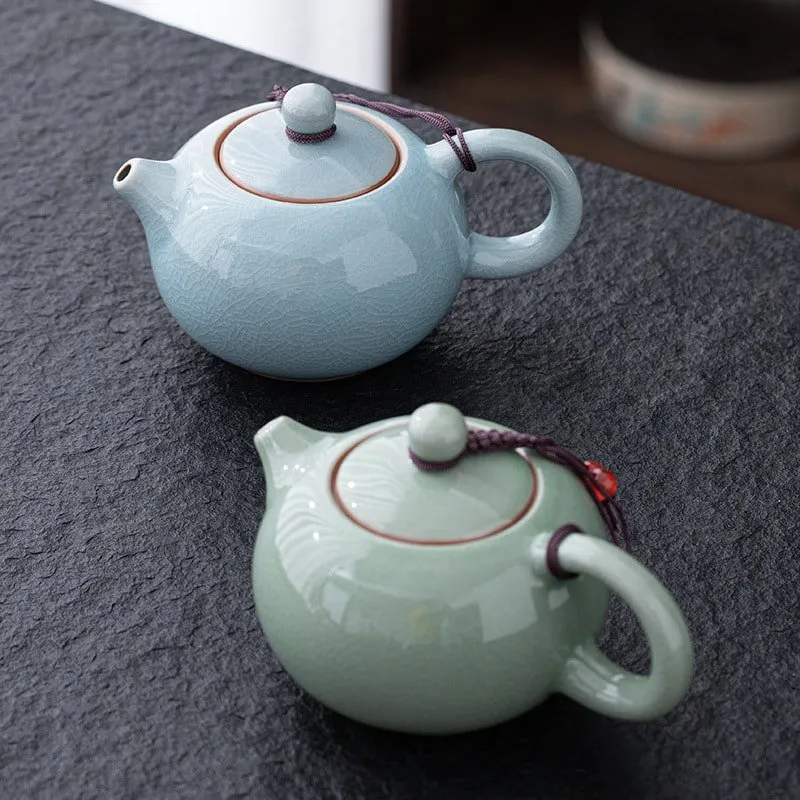
Explore and Experiment
Trying different teas and teapots is part of the fun of tea brewing. If you’re new to using a ceramic teapot, start with a versatile model and explore teas like green, black, or herbal blends. For a more traditional experience, learn how to use a Japanese ceramic teapot, which is ideal for teas like sencha or matcha. Each type of teapot enhances your tea differently, so don’t hesitate to experiment and find your favorite combination.
Share Your Experience
Do you have a favorite teapot or tea recipe? Have you tried brewing tea in a ceramic or porcelain teapot? Let us know in the comments below! Share your tips, tricks, and questions about how to use a ceramic teapot or other teapots. Let’s learn and enjoy the art of tea together.
With the right teapot and a little practice, tea brewing can become a cherished ritual. So, whether you’re figuring out how to use a ceramic teapot for the first time or exploring new styles, take the time to savor the process. Brew a cup of tea, relax, and enjoy every sip!
Frequently asked questions about using ceramic teapots
This is one of the most common questions: can you use a ceramic teapot on the stove? Most ceramic teapots are not designed for direct heat and may crack when placed on a stove. However, some stovetop-safe ceramic teapots are made specifically for this purpose. Always check the manufacturer’s instructions before using your teapot on a stove. If unsure, heat water separately and pour it into your teapot.
If you’re wondering, “can you use a ceramic teapot on an electric stove?”, the answer is similar. Unless the teapot is labeled as heat-resistant, avoid placing it directly on an electric stove. For safety, use a kettle to heat water instead.
Many people also ask, “can you use a ceramic teapot on gas stove?” Most ceramic teapots are not suitable for direct flames. If you need to heat water, it’s better to use a stovetop kettle or a heat diffuser to protect the teapot.
Preheat the teapot by rinsing it with warm water.
Add the right amount of tea leaves, typically 1 teaspoon per cup.
Pour hot water (at the correct temperature for your tea) into the teapot.
Let the tea steep for the recommended time, then serve.
Avoid boiling water; use slightly cooler water to prevent cracking.
Preheat the teapot before brewing to maintain the temperature.
Porcelain is ideal for delicate teas like green tea or white tea due to its non-porous surface.

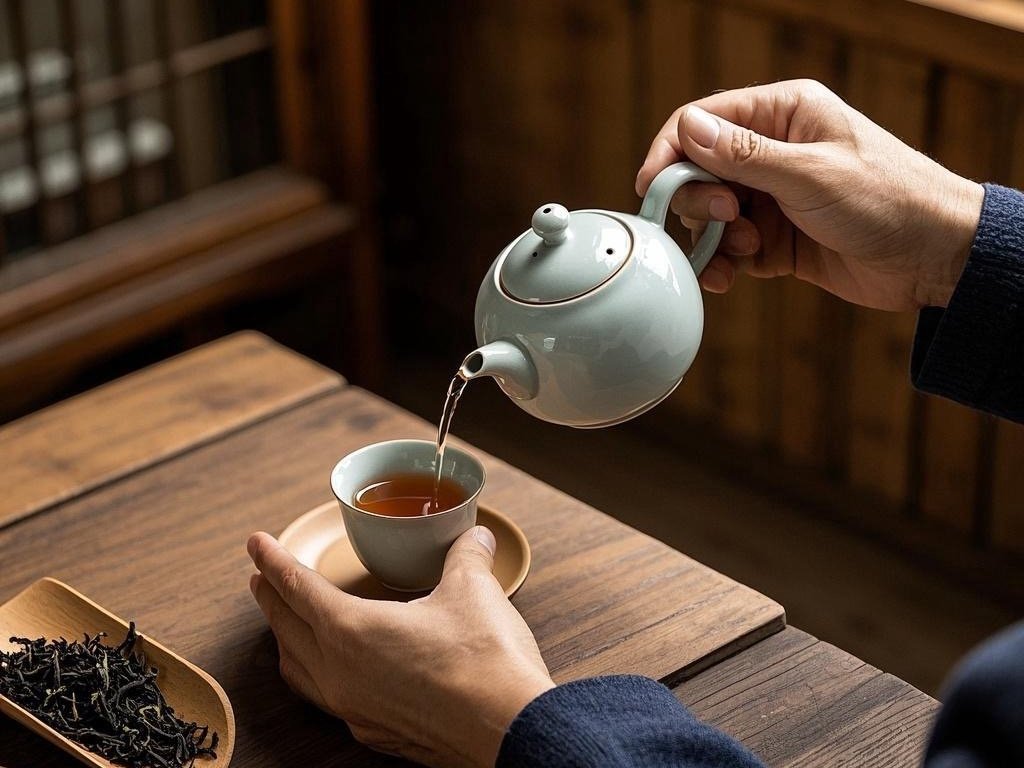





Leave a reply